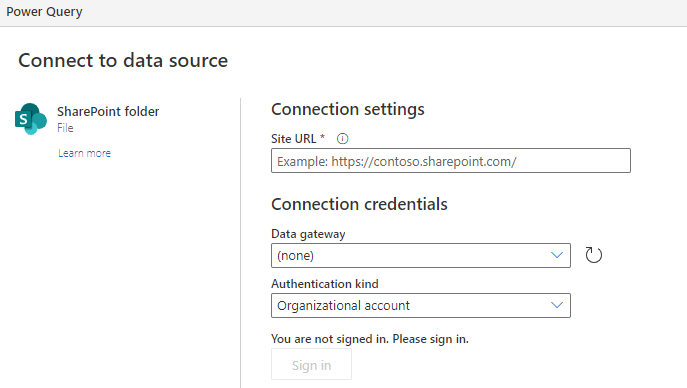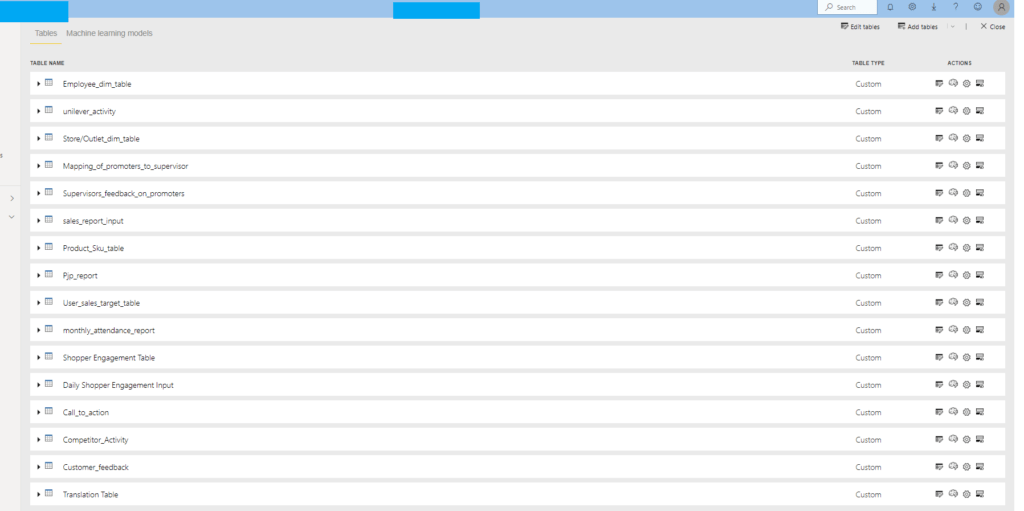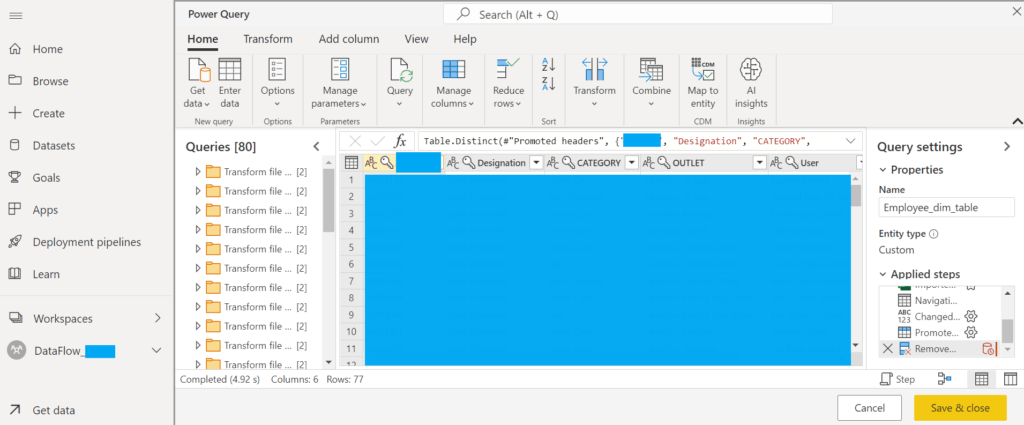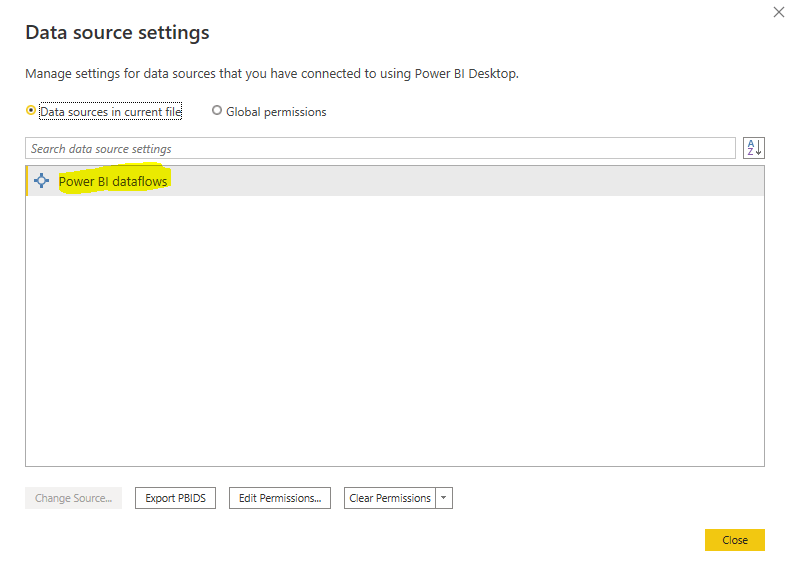Dataflow is a comprehensive way to deal with large datasets and reduce the load on data analytical tools/software like Power BI. We’ll discuss the need for dataflows, ways to create them, and the uses of dataflows for a business.
Power BI is a popular data analytics and data visualization software developed by Microsoft. It is a collection of apps, software services, and connectors that collect, process, store, and analyze data to deliver reports in real-time.
There is much more to Power BI than its definition. That’s because Power BI deals with the continuous inflow of data from multiple sources. The accuracy of the reports generated by the software depends on the quality of the input data.
Cleaning, sorting, formatting, and streamlining data within the system is essential to get actionable insights. This gets harder when the business has to deal with large datasets. When you add large volumes of data to a system, you need to take extra care to maintain the overall quality.
Setting up dataflow in Power BI is a smart solution to manage input data and ensure accurate reports. In this blog, we’ll read more about the problems caused by large datasets and how dataflow solves the problem.
Dirty data or unclean data is a real problem in today’s world. We have access to countless information sources. But how good is the data from each source? Errors, redundancy, unwanted details, etc., need to be identified and cleaned before the data is used for analytics.
Data with greater velocity, variety, volume, etc., that cannot be processed by traditional systems is known as big data. Processing unclean big data requires a higher computing and statistical power that can increase the expenses for a business.
Misspelled words or missing characters/ values can change the context of data and lead to the wrong analysis. Identifying these errors in large datasets is time-consuming and effort-intensive.
The difference in data structure between two or more data sources can create confusion when formatting the data into a single structure. Imagine what would happen if one field was attributed to another.
Data from two sources might contradict each other based on the parameters used. Common abbreviations have multiple meanings, and each source might refer to a different one. Money could be measured in different currencies. Changing the values and correcting them in a large dataset can be a never-ending task.
Dataflow is a way to prevent issues with large datasets in Power BI. But what is dataflow? The term dataflow has quite a few meanings. Microsoft defines dataflow as a collection of tables that are created in the Power BI workspace. Any number of tables can be added to the dataflow. The existing ones can be edited to correct and update the information.
According to another definition, dataflow is a process running in the cloud and not related to any particular Power BI report. The dataflow can be used for numerous reports simultaneously. That means five or ten employees can send a query to the same dataflow at the same time and get the information they require. Since dataflow runs on the cloud, any changes required will not have to be made to all the reports but only to the data in the dataflow.
Another explanation of dataflow is comparing it to a typical river or a water body. Just like a river has different sources and stops but ends at a single destination, data in the system also comes from different sources but gets stored and used in the data warehouse/ data lake for analytics. By releasing data from silos and removing barriers, it will create a seamless data flow within the enterprise. When this data is used for querying in Power BI, it will provide better and more accurate insights.
We now know what dataflow is. But why is it so important for a business to create dataflow in Power BI? What changes does it bring to the business processes? Let’s take a look.
The biggest advantage of creating dataflows is to reuse them multiple times. You don’t have to create a new dataflow for each report. You also don’t need to remove/ delete old dataflow and create a fresh one because of outdated information. One more advantage is that you don’t have to create new data connections each time (both on the cloud and on-premises).
Dataflows can be integrated with existing systems and tools in the business. Dataflows work seamlessly with Power BI as you only have to set up the connections and run queries.
Your Power BI premium subscription is enough to create and access dataflows in data lakes. If you don’t use Microsoft Azure, there’s no need to start using it only for dataflows. There won’t be any additional expense to pay for licenses.
Keeping data up to date is necessary to generate real-time reports. You can track the updates and changes made to dataflow and schedule the refreshing of the tables. Furthermore, you can build different processes to manage dataflows and save them in different places.
A dataflow also serves as a temporary data storage center. Processing a large data file/ database doesn’t require extra time. The data can be stored in dataflow for the time being to speed up the analytics and deliver timely reports.
Here’s how to create dataflow with new tables that are hosted on OneDrive Business:








Dataflow reduces the load on Power BI by taking over the transformation layer. Since the tables in dataflow can be edited and reused multiple times, dataflow can be used with many applications within the enterprise. The dataflows can be connected to other Microsoft Power Platform technologies Power Query, MS Dynamics 365, Power Automate, Power Apps, and so on.
Dataflows are an asset to the business when created and used properly. There are various uses of dataflow in an enterprise because of its flexibility, scalability, and reusability.
Transforming large datasets will no longer be stressful for the employees. Dataflows can speed up the process and reduce the expenses required to clean, format, and transform huge volumes of data regularly. This helps reduce the time taken for running a query or performing data analytics to generate reports.
Asking employees to stand in a line and generate reports one after another is not the way to work. At the same time, creating multiple copies of datasets for each employee is also not feasible. Dataflow provides a simple and effective solution. It is versatile and multiuser-friendly. Employees from different departments can access the dataflows through their Power BI desktop versions or other Microsoft Power tools to generate reports. Since the dataflows run on the cloud, the systems on the premises will not slow down.
Dataflows are easy to use because they allow data transformations anytime. The outputs can be saved to multiple locations for easy access. The purpose of creating dataflows is to make the systems friendlier for the end-users. Dataflows are a vital part of centralized data storage like data warehouses or data lakes. That allows users/ employees to access dataflows without too many restrictions.
Since dataflow takes over the transformation layer and handles the responsibility of loading, cleaning, and transforming large datasets, this job is no longer done by Power BI. Instead, Power BI runs queries and delivers actionable insights in readable reports. Dataflow streamlines the flow of information across the systems and applications connected in the enterprise and improves the efficiency of data analytical tools.
Once the dataflows are created, they can be continuously used for day-to-day decision-making. A less loader on analytical and power tools speeds up the response time. When employees get reports immediately after querying, they can make faster and better decisions at work and be more productive.
Now you know the importance of dataflow and the need to create one in your enterprise to streamline datasets and analytics. You can hire offshore Power BI developers to build the required dataflows and set up refresh schedules for your business needs.
Dataflows make it easier to use the data-driven model by reducing the expenses incurred and increasing the accuracy of the derived insights. Talk to our team to know more about different ways to create dataflows based on your business processes.
